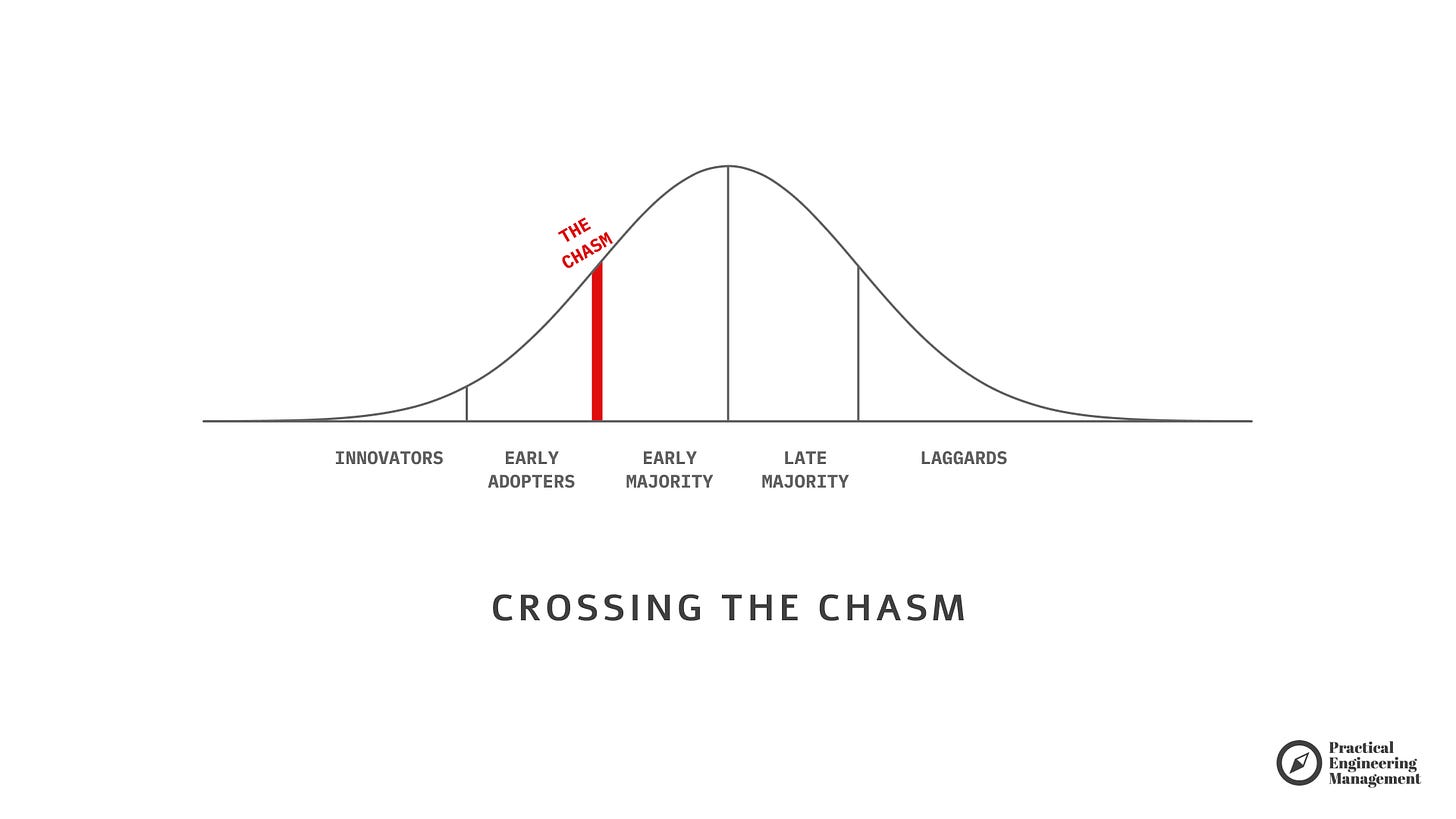The Role of the Engineering Leader in QA Shift Left
Part 3 of Leading QA Shift Left Transformation
In Parts 1 and 2 of this series, we explored why QA Shift-Left matters and how to implement it via a 5-step technical framework. Now, in Part 3, we turn to this transformation's critical people and leadership aspects.
No matter how technically sound your transformation plan, the initiative will fail if people aren’t ready or willing to embrace change. Shifting quality left disrupts established roles, processes, and professional identities. It challenges QA professionals who may fear becoming redundant, developers who resist additional responsibilities, and leaders who must navigate these complex dynamics with empathy and vision.
The rewards, however, are substantial. Teams that successfully shift quality left not only deliver faster with fewer defects but also experience higher engagement, greater cross-functional collaboration, and more meaningful work (as we outlined in Part 1).
Let’s explore how we, as engineering leaders, can guide this transformation effectively while addressing the human concerns at its core.
Understanding the Human Impact of QA Transformation
At first glance, this transition may look purely technical, but its most profound impact is on people. Let’s consider the common concerns from multiple perspectives:
For QA professionals, this change can trigger existential questions about their role and future. They’ve invested years building expertise in specialized testing and quality control only to hear that “quality is everyone’s responsibility.” Many will wonder: “If developers are doing the testing, what’s left for me?”
For developers, Shift Left can feel like yet another responsibility added to an already overwhelming workload. They may think, “I already have pressure to deliver features quickly. Now I need to be a QA expert too?”
For engineering leaders, the challenge is to honor these legitimate concerns while steering the organization toward a more effective quality approach that benefits everyone in the long run.
In my experience running Shift-Left transformations, QAs concerned about their future and engineers resisting “one more responsibility” have always been the hardest challenges to crack. The worst thing you can do is ignore these voices.
Crossing the Chasm: Engineering Leadership’s Role in Change
Many transformations follow a predictable adoption curve: innovators embrace change eagerly, early adopters enthusiastically follow, but then comes the “chasm”—the gap that makes or breaks the transformation before reaching the early majority.
According to research on change management, this gap exists partly because what motivates early adopters (innovation, competitive advantage) differs from what motivates the majority (practicality, peer validation). To bridge this divide, you need to adapt your approach.

Crossing the chasm effectively requires addressing three key elements:
Individual practice and beliefs: Each person must understand their role in the transformation.
Active leadership participation: Both formal leaders and informal influencers must demonstrate commitment.
Human-centered design: The transformation must address the values, beliefs, and rituals that shape workplace culture.
In practical terms, this means moving beyond simply describing the technical aspects of Shift Left and focusing more on how it benefits individuals and teams. Rather than emphasizing automated tests in CI/CD, highlight how early testing reduces the cognitive strain of context switching for developers and creates more strategic, less repetitive work for QA professionals.
When working with one of my teams on a Shift-Left transition, we devoted a lot of effort to weekly and monthly reporting on metrics like:
Test coverage (Shift Left starts at the bottom of the testing pyramid)
Number of bugs/crashes/incidents
Testing duration
Each week, the team reviewed these numbers and saw that increased test coverage had a visible impact on product reliability. We didn’t overcomplicate this until the saturation point was reached.
When you go from 0–10% test coverage to around 50%, you’ll definitely see a reflection in product quality. Going higher, however, meant the benefits were less obvious, and the team then had to shift focus to other aspects of testing and observability.
Here’s one of my stories from the past: Dealing with bugs on mobile apps.
Evolving Roles in a Shift Left Environment
One of the most sensitive questions in QA Shift Left is what happens to QA professionals. Far from making them redundant, this transformation creates opportunities for more impactful, strategic roles.
But we also must be realistic. Transformation from the classic Quality Control role must happen. The World Economic Forum’s “Future of Jobs” report states that Software Tester roles will decline by 15% in the next five years. Today, it’s apparent that manual testing or relying on testers as the only quality gatekeepers is simply ineffective.
When quality shifts left, QA professionals can evolve into several valuable roles:
Quality Coaches and Consultants: QA professionals know deep about testing patterns, edge cases, and user perspectives. In a Shift Left environment, they become coaches who help developers integrate this knowledge into their daily work. They review testing approaches, provide feedback on test coverage, and offer guidance on complex testing challenges.
Testing Architects: They create the frameworks, tools, and environments that make early testing possible. They evaluate and implement test automation frameworks, design testing taxonomies, and build the technical infrastructure needed for continuous testing.
Quality Advocates: They represent the end user’s perspective throughout the development process, ensuring that acceptance criteria are clear, testable, and aligned with user needs. They participate in requirements analysis and refinement to prevent defects before a single line of code is written.
CI/CD Integration Specialists: They ensure that quality checks are seamlessly integrated into automated pipelines, making quality gates frictionless rather than bottlenecks.
Each of these roles leverages quality expertise while creating more strategic impact than traditional manual testing. They allow QA professionals to grow professionally while contributing significantly to product quality.
How does this work in practice? Here are a few examples of new QA engineer responsibilities from my experience (the content is available only for paid subscribers):


